As a homeowner, you may want to know when water is flowing through your PVC pipe and when it is not. Luckily, we have done some research for you, and here is what we found.
You will notice some vibration if water flows through a PVC pipe. Temperature change is another sign. You can touch the pipe to know if there are temperature changes, either from hot to cold or vice versa.
The vibration of a PVC pipe is the continuous back-and-forth motion from an equilibrium position. Keep reading as we explore how you can tell if water flows through a PVC pipe.
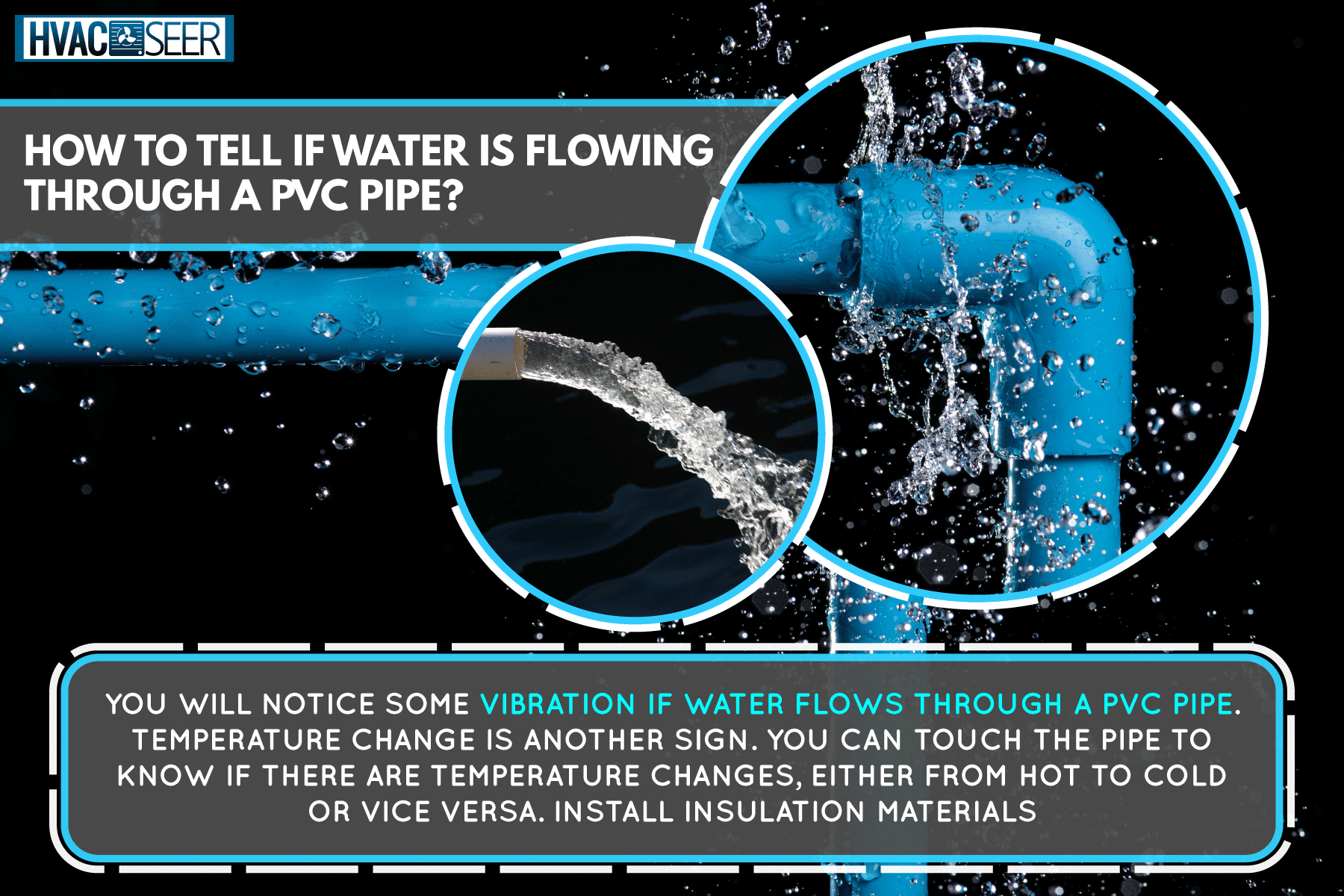
How To Tell If Water Is Flowing Through A PVC Pipe
Most new homes use PVC pipes because they hardly get rust. Water runs through the pipe to different areas; sometimes, you may not know if the water is flowing. However, a simple way to know is to check for vibrations and temperature changes by touching the pipe.
The vibration of a pipe is considered a normal phenomenon in the piping system. It is the continuous back-and-forth motion from an equilibrium position. Several factors can contribute to vibration in a PVC pipe.
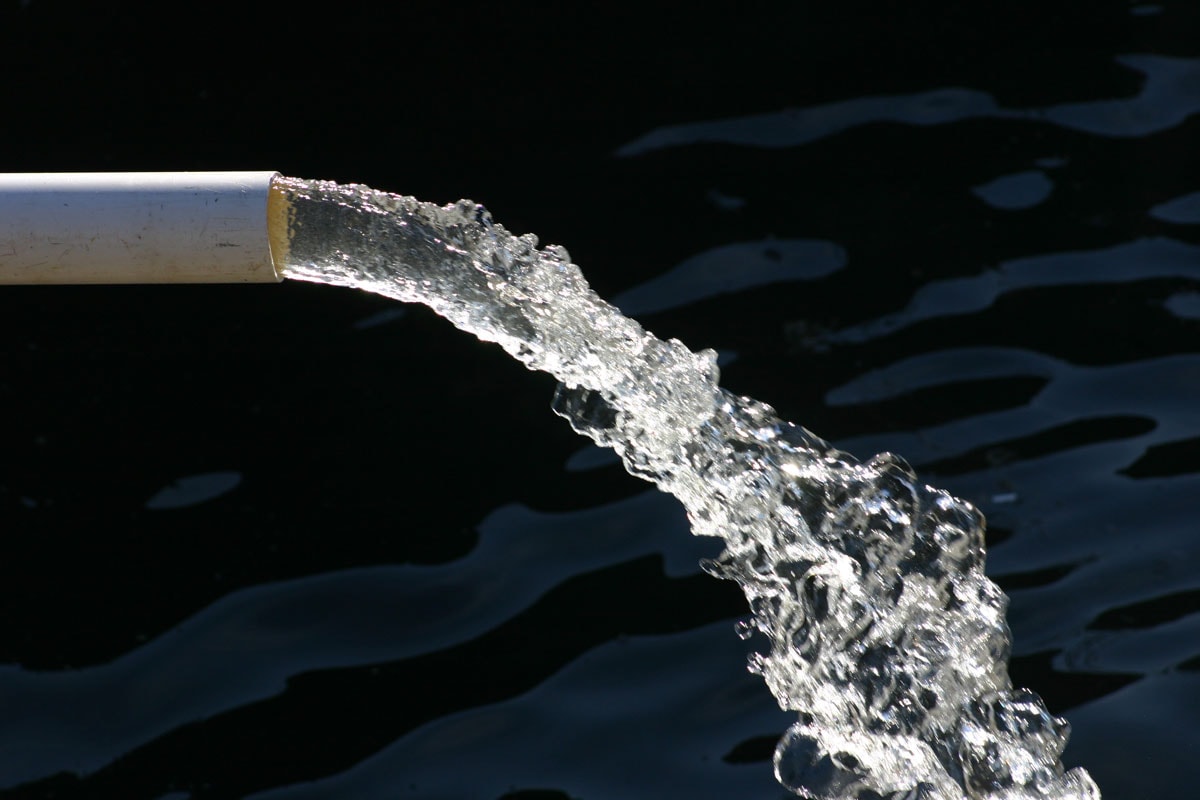
Generally, turbulence in liquid flow is a significant factor and can lead to a phenomenon known as flow-induced piping vibration. Here, water flow gives rise to high kinetic energy, making the PVC pipes vibrate. You can notice flow-induced vibration near pipe bends and branch connections, to mention a few.
What Pushes Water Through PVC Pipes?
Water flow through PVC pipe is made possible because of water pressure. The proper understanding of water pressure cannot be overemphasized, especially for plumbers who must ensure adequate water flow through all the pipes. Water is stored in a reservoir, which, in most cases, is held up high.
The weight of the water in the tank or reservoir provides pressure that pushes the water through the PVC pipes below. In cases where water needs to be pushed through higher pipes, water pressure can be generated by pumps.
How Fast Does Water Move Through PVC Pipes?

The water flow through a pipe shouldn't be more than 8 to 10 linear feet per second. For instance, the water flow in a river tends to be faster through the midstream and at the edges.
Likewise, the flow of water through PVC pipes is not uniform. That is, water flow in pipes varies from edge to edge. There are different layers of water flowing through pipes. There is the top layer, the bottom layer, and the middle layer.
Usually, the top and bottom layers are in contact with the pipes. It implies that there will likely be friction at the contact points. There is zero linear velocity in the layers where the water hits against the pipe's walls.
However, as the water moves towards the center of the pipes, there is an increase in the flow of water. Therefore, it is safe to say that water moves fastest at the center of the PVC pipes.
Can A Plumber Increase Water Pressure?
The simple and short answer is "YES!" You may suddenly wake up one morning to find that the water pressure from your pipes is low. To a great extent, it can be very frustrating.
Nevertheless, a plumber can improve the water pressure coming through your pipes. Here are a few things that can be done:
Clean The Pipes
Often, sediments, particularly debris, clog water pipes impeding the flow. Water flow reduces significantly when your water pipes are clogged. You can improve the water pressure by removing debris and any sediments.
Adjust The Supply Valve
In many homes, pipes are usually connected to a supply valve, which controls water flow through pipes. To improve the water pressure coming through pipes, remove the nut at the top of the pipe connected to the valve and turn it clockwise.
Use A Pump
Pumps are another alternative that can help boost water pressure through pipes. By using booster pumps, the rate at which water flows through the pipes is increased, thus, leading to an increase in water pressure.
Check out this booster pump on Amazon.
How Do You Detect Water Leaks In a PVC Pipe?
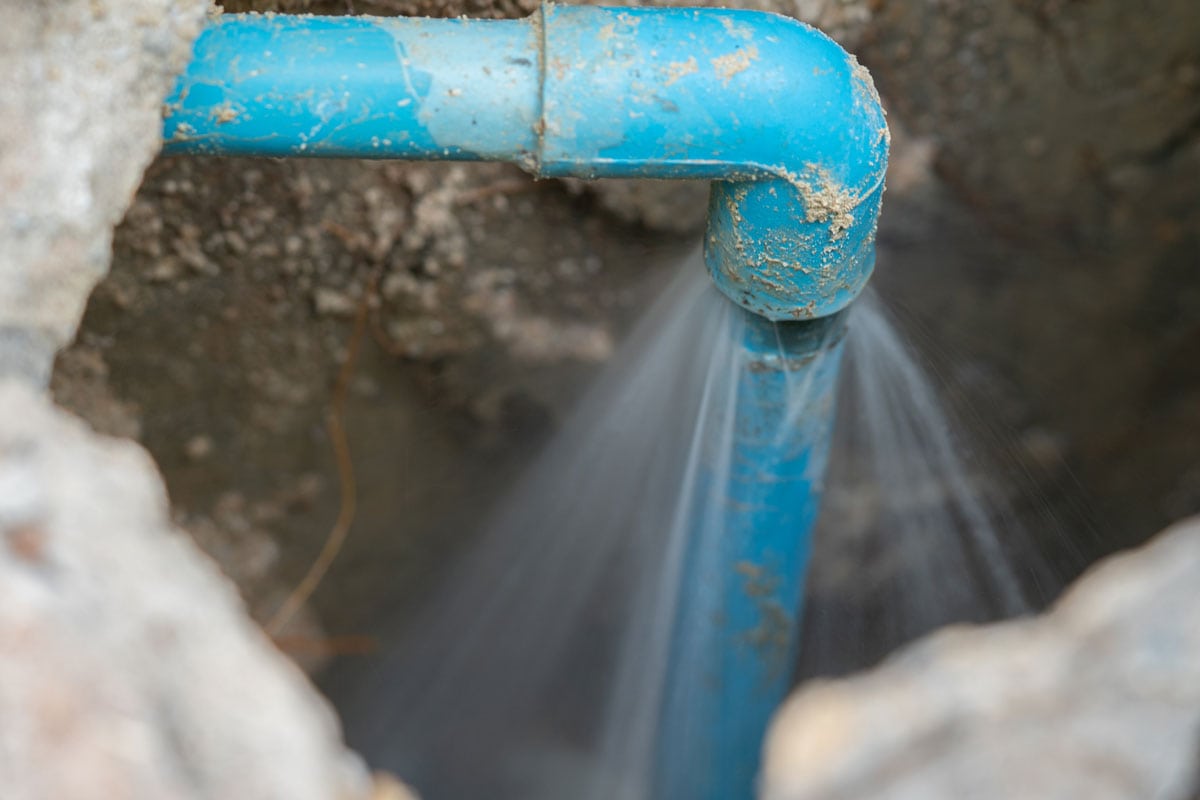
There are metal and plastic types of pipes when it comes to piping systems. Plastic pipes are made from PVC, CPVC, or PEX, each of which has its differences. PVC pipes are more advantageous when it comes to installation and maintenance.
However, it poses a severe challenge in identifying underground leaks. There are several ways you can detect water leaks in a PVC pipe. Here's how:
Examine Your Water Meter
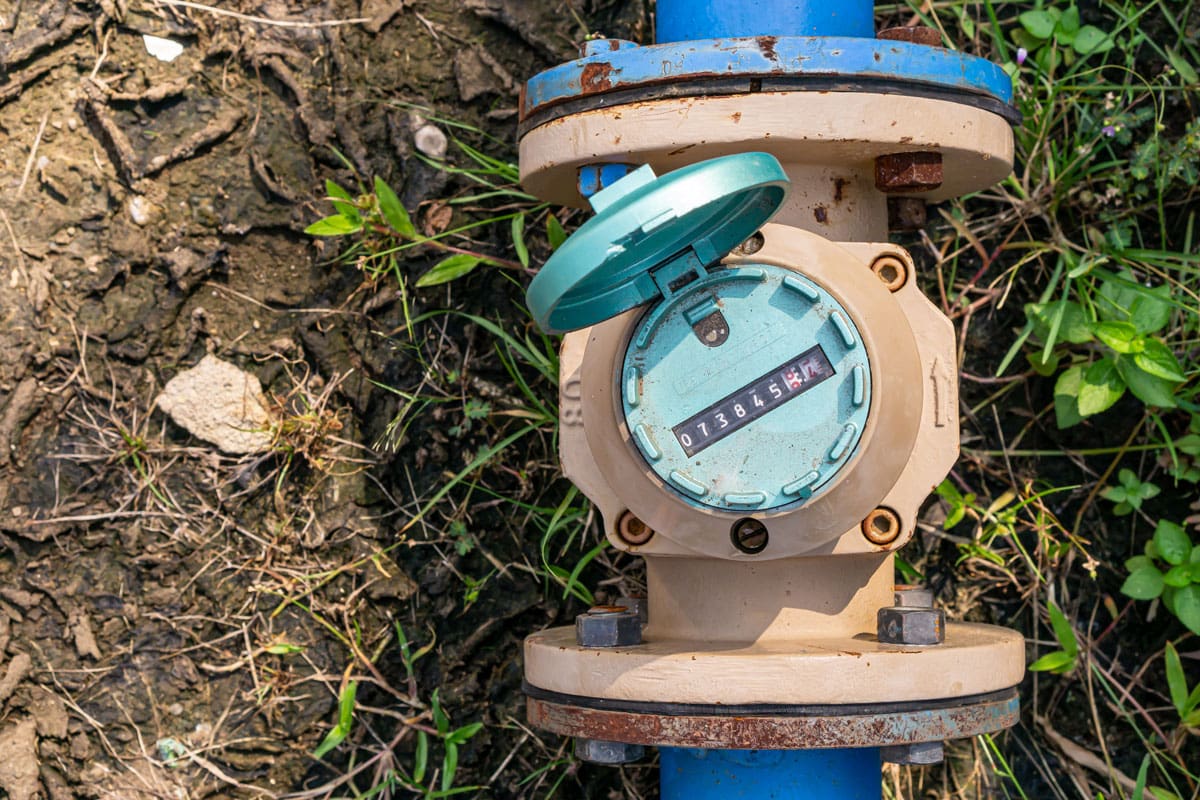
You can quickly tell if your pipe leaks by checking the water meter. But first, you should turn off all the water faucets. Then observe the water meter for any changes.
If there is an immediate change, there is a fast-moving leak. However, if there is no immediate change, simply wait about an hour or two and recheck it. If there is a change, you probably have a slow leak in your pipe, which could be underground or near the meter.
Check Your Water Usage
The U.S. Environmental Protection Agency recommends constantly checking your water usage. Depending on the size of your home and the number of people living there, you can easily predict your monthly water usage.
According to the agency, a family of four can't use more than 12,000 gallons of water in a month. So, if you notice that your water usage is very high, there might be a leak in your pipe.
Monitor Your Water Bill
You can easily predict your monthly water bill based on the size of your home and the number of people living there. If you notice an evident increase in your monthly water bill but how you use water has not changed, there might be a leak somewhere in your pipe.
These are simple ways to know if you have a leak in your pipe. You can also install a leak detection device to help detect leaks in your pipes. It is best to fix any leaking as soon as possible, so it doesn't get worse.
Have a look at this water leakage detection device on Amazon.
How Do You Calculate Flow In A Pipe?
To calculate the flow of water in a closed pipe, you need the flow rate formula. The flow rate of any liquid, in this case, water, refers to the volume of water flowing through a pipe at a given time.
Usually, it is measured in liters per second (L/S). The formula for calculating the flow rate is Q = AV. Where Q is the flow rate, A is the area of the closed pipe, and V is the velocity of the water.
How Do You Make Water Flow Upwards?
To make water flow upwards, you will either use gravity or pressure differentials, usually created through pumps. When you tilt the pipe downwards, gravity acts on the fluid moving through the pipes by causing it to be accelerated.
With this, you can apply pressure to the water at the bottom end of the pipe, and it will flow upwards with lower pressure. Fluids, even water, are supposed to have pressure everywhere. However, the liquid is drawn to a lower-pressure area when a differential or flow path [usually a pipe] is present.
To Wrap Up
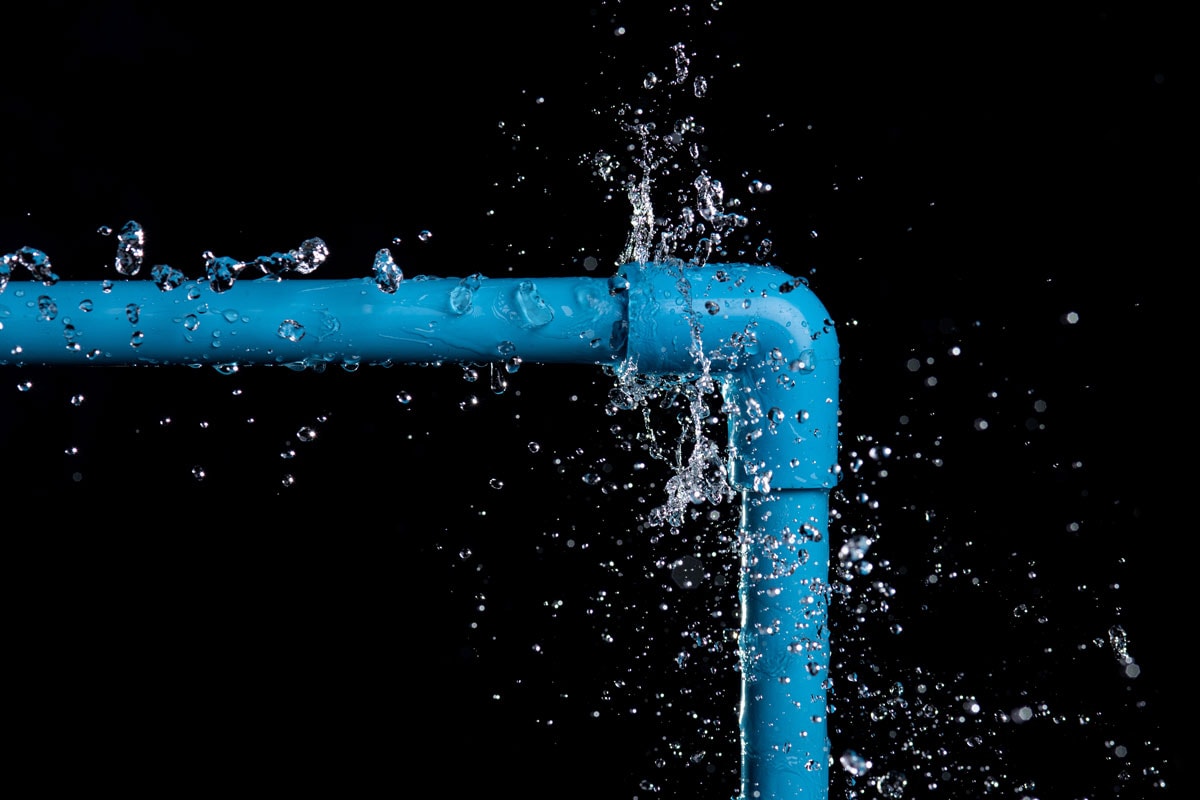
It may not seem easy to tell when water flows through a PVC pipe. But you can quickly tell by checking for vibrations and temperature changes in the pipes.
If you notice that your PVC pipe is leaking, fix it as soon as possible. You can call a plumber to help you with that.
If you enjoyed reading this post, here are similar articles you may like:
Water Leaking Around Radon Pipe - Why And What To Do?


